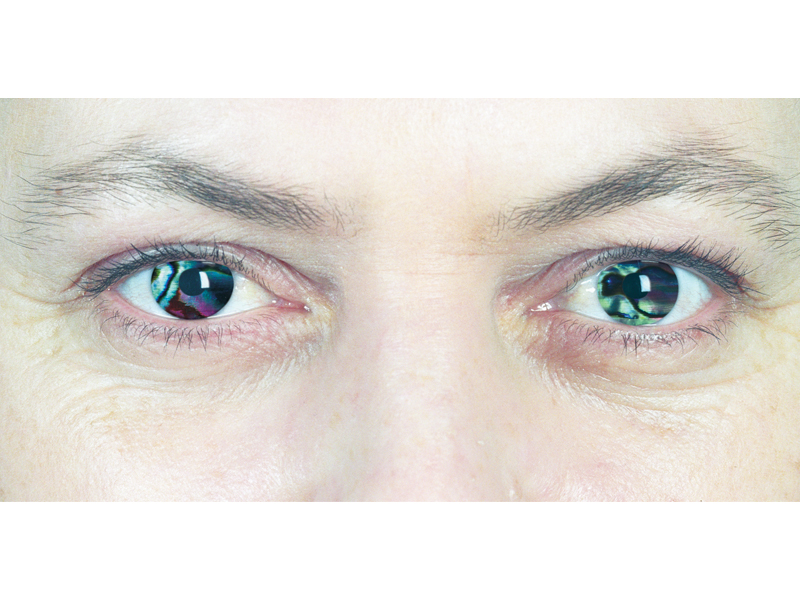Having two interviewers—a New Zealander and a “visitor,” a Māori and a whitey—is a strategic choice, meant to address the challenge of unpacking a practice that evolved out of Māori theory, for both a local and an international readership. This interview will be followed by a second text, in which Areta, Benjamin, and Nigel discuss their way down the complex path of naming one of Areta’s works.
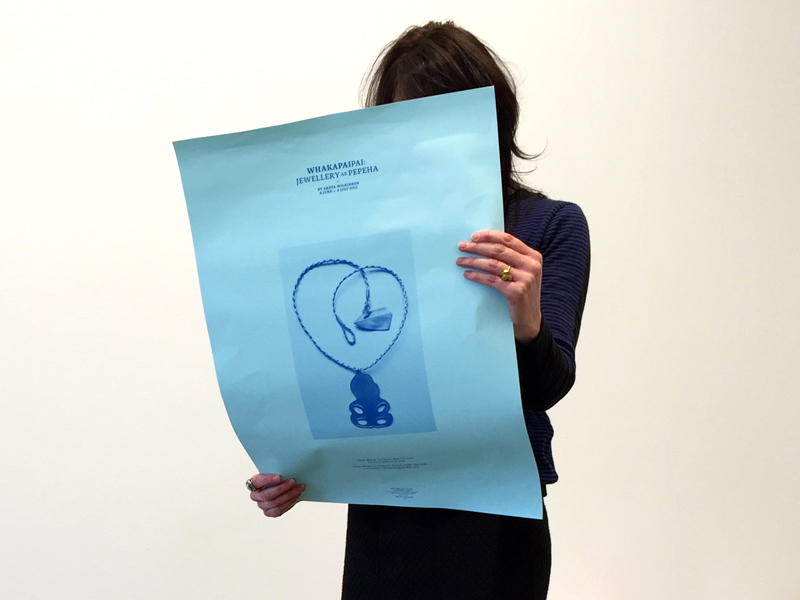
Benjamin Lignel: Discussion—He Kōrerorero.
Where are words situated? Who is speaking, to whom? Is understanding possible without describing who we are, where we are, and what we are? Who has the right to speak about you? About your work?
Areta Wilkinson: Where are words situated? Who is speaking, to whom?
This is an interesting question. Within a Māori worldview and Māori creation narratives, objects once could speak. Without going into detail, one story tells of the origins of carving and a whare (house) under the sea belonging to Tangaroa (deity of the sea). The carved posts in this whare could speak and sing, but unfortunately, through an act of revenge, the whare was burnt and the surviving posts couldn’t speak. More relevant to today, I think about object-making as a visual language, works have required knowledge to be created and therefore inherently contain all that knowledge of their creation, they describe a worldview of that time and place but they don’t actually speak Ben.
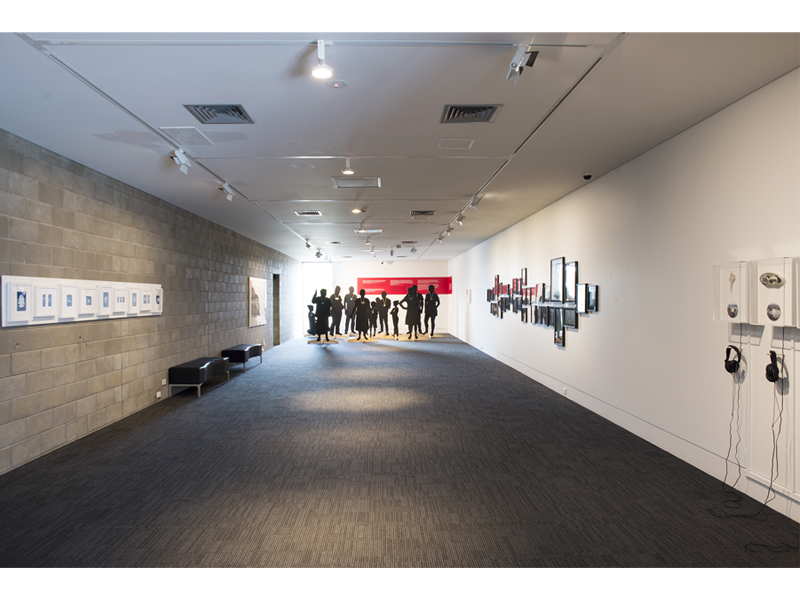
He Kōrerorero (discussion) for me infers conversational narratives that I have experienced kanohi ki te kanohi (face to face), that contributed cultural insights from iwi (tribal) and artist experts from a range of worldviews. Key concepts relevant to my art practice were identified from discussions, and they helped form the questions and the decisions I made throughout a recent body of work. My method is participatory, allowing these collective concepts to develop my critical thinking. He Kōrerorero expands my understanding, providing an insight into multiple worldviews, the spaces that we inhabit together and apart.
Cultural historian Hirini Moko Mead explains, “…a taonga tuku iho is a highly prized object that has been handed down from the ancestors. Implied is the notion of he kupu kei runga (there are words attached to it).”[1]This is because heirlooms touch the lives of many people over many generations, and Mead suggests it is the accumulative kōrero of those associations that enlivens an object.[2]According to Mead “…building words” or kōrero around heritage heirlooms and ensuring taonga sustain “…contact with people” are the transformative and essential components of taoka tuku iho.[3]
“Who we are, where we are, and what we are”—these are fundamental aspects of existence and identity. In human relationships it helps sometimes to share this background as it can be a way to find a connection, and helps explain one’s philosophical positioning. For Māori, whakapapa is a position to relate from, a framework to find connections with all human beings and all life. I would prefer to find a way to relate to others than not.
Who has the right to speak about you? About your work?
Anybody, that’s fine.
But I also wish to define my practice through my own terms.
Nigel Borell: Pepeha, heritage and place.
Your work over the past 10 years (predominantly) has investigated heritage and a connection to place in lots of ways, however this seems to have really accelerated since you moved back to the South Island. Can you describe how this sense of connection has informed your work in new ways?
Areta Wilkinson: My work has always investigated cultural heritage and intersections, and it’s a neat point in time when I am able to look back and see a body of work that has been slowly building (and contributing) to this point.
Within the Māori language, a Ngāi Tahu dialect and unique terms developed throughout Te Waipounamu (South Island of New Zealand) because of the impact of landscape. Living in Te Waipounamu on the land of my ancestors and through my relationships with whānau (extended family) here has naturally shifted my thinking. Therefore I like to think the landscape is impacting on my visual language.
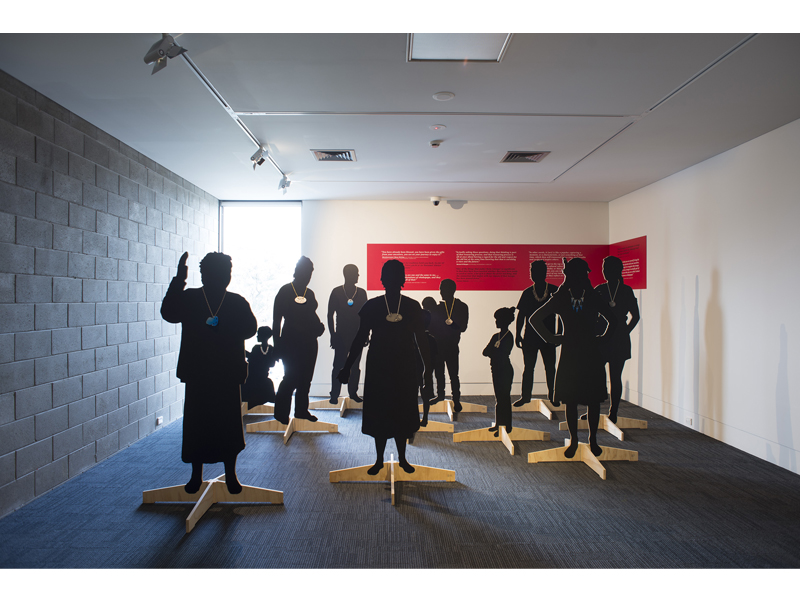
Nigel Borell: Claims-making.
Following on from this, I find your PhD study and the piece Hine-Āhua, as a central personification of this study, as treading new ground for wider jewelry practice here in Aotearoa New Zealand. Like the nature of pepeha, there is a certain claims-making process at work here. Would this be true? How conscious a move was this in your work?
Areta Wilkinson: Placing a pouwhenua or stake in the ground and claiming space for Māori perspectives has always been a political action. Māori have had to assert this mana (authority) in all range of contexts since we were labelled the “other” by “observers.” I hope I have inserted Māori/Ngāi Tahu thinking into conversations around contemporary jewelry but proposition a space for other practitioners to enliven and expand. Kaupapa Māori is a cultural praxis, i.e. Māori critical theory in practice—these are Māori philosophical ideas applied to daily life that come from this part of the world. This praxis enriches the view.
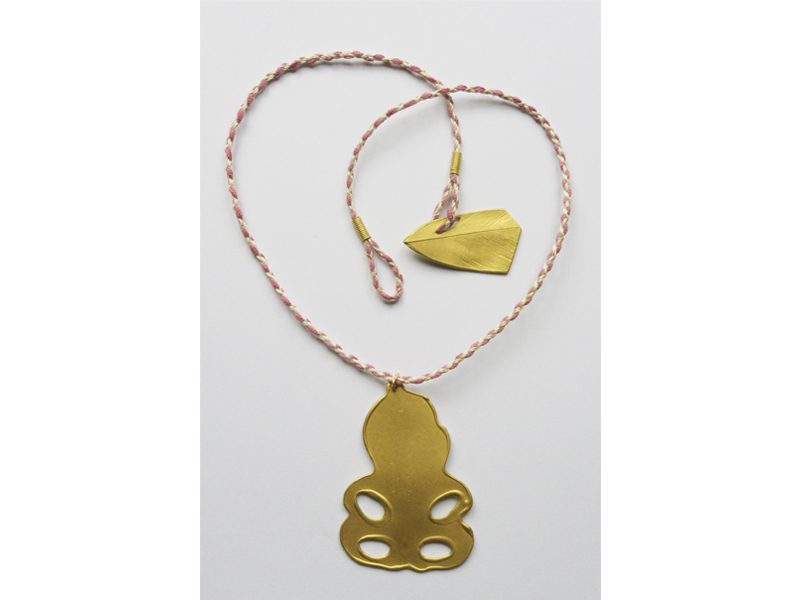
Hine-Āhua is one manifestation of these ideas—her form was generated out of critical theory that connects to Aotearoa New Zealand. Her name and pepeha (Māori proverbs) describe a genealogy that locates to the minerals from the earth here, this genealogy reaches further back into Māori creation narratives where precedence was set for moving an idea into form through a creative and very experimental (hands on) process. Without this praxis, she wouldn’t exist.
Benjamin Lignel: The tiki as a personification.
How would you explain this idea to a visitor? Is this a category of being that sits somewhere between “things” and “people”? Can a tiki be owned, or are we just their “temporary caretakers”? Are there non-Māori equivalents of personified objects?
Areta Wilkinson: These days—perhaps an ancestral object that represents an ancestor or human characteristics or qualities.
For Māori, ancient tiki and heritage items with their connection to the land and layers of history (whakapapa/provenance), passage of time, use and purpose—these customary treasures may become the embodiment of the ancestors themselves.
I prefer to think we are kiatiaki (caretakers) of tiki, and that they may continue to have relevance to further generations.
Other examples: The Crown personifies the head of the monarchy, the cross represents Christ, many peoples have symbols representing human traits. It’s not just a “Māori thing.”
Benjamin Lignel: Naming.
Words in Māori culture seem to have performative functions. Pepeha, for example, are “customary forms of Māori oral expression that locate individuals within the landscape and connect individuals to eponymous ancestors.” Can anything be named, and given a place in the “landscape”? Do objects themselves participate in the naming discussion? Is a name forever?
Areta Wilkinson: I am not a whakapapa expert, but my understanding is everything can be named and has a place. This is probably not that dissimilar from Hawking’s Theory of Everything but comes from a Māori worldview.
There is precedence for objects’ names to change, often through a significant event or deed. People’s names changed, too, with the times. Christchurch post earthquake will reinstate old place names in the city because of the heritage memory names can hold.
Benjamin Lignel: Genealogy—Whakapapa.
Are the genealogy of objects and that of people parallel to one another? Are they in dialogue? Are they mutually defining? (I rewrite the tiki, the tiki rewrites me.)
Areta Wilkinson: Yes, for Māori, the genealogy of objects, of people, and of land are inextricably linked. Te Marie Tau, a Ngāi Tahu researcher on Ngāi Tahu oral traditions, contends, “…whakapapa is then, a metaphysical framework constructed to place oneself within the world.”[4] Leonie Pihama (a scholar of Māori methodologies) asserts that whakapapa prioritizes “…cultural relationships over the notion of privileging the individual.”[5] From a Māori worldview, my existence through a concept of whakapapa is relational to everything.
Considering the question “What is the whakapapa?” within my practice provoked me to inquire further into my relationship with cultural material, including place and people. Whakapapa can be applied to an applied art practice, where conjoined ideas impact to create new ideas. My contemporary art form enjoys cross-cultural alliances and is the synthesis of international silver- and metalsmithing traditions conjoined with Māori concepts. And so I must acknowledge many influences on me and my work, including social science theory, the relationship of my silver objects to the metal of silver bromide photograms, Man Ray, John Herschel and Anna Atkins etc.

Benjamin Lignel: Activation of heirloom (taonga tuku-iho), of objects.
How does one activate an heirloom? Is wearing it, or carrying it in public, the usual way it is done? Is an exhibition doing something similar? What is an exhibition doing?
Areta Wilkinson: A suggestion given to me by Gerard O’Regan (a Ngāi Tahu heritage expert) is pupuritia—holding something close so that perhaps the next generation may hold it closer. His kōrero was about creating taonga (treasured possession) through the activity of treasuring, cherishing something important by holding close, giving attention, taking care, recounting the stories and revisiting places.
I am interested in the concept of taonga tuku iho (heirloom/heritage passed down), what cherishing enlivens an object or taonga and what can I create or contribute of value. Through a generational art making process, I have made artworks that can be placed within a Māori history of adornment, I have added my “words and stories” that anchor the concepts in my time, and if these new works pass into the hands of others, they too may attract further kōrero.
Nigel Borell: The power of sharing—manaakitanga.
Another powerful concept that seems to pop up throughout this process of investigating, thinking, and making is a certain type of generosity, generous with ideas, generous with how you share concepts, and generous in the way you work and involve others (whether they be your kin, friends, colleagues, or potential clients). Why is this so important to you?
Areta Wilkinson: I have been fortunate to “grow up” in a culture of generosity. I am a result of Māori art education influenced heavily by the 1940s Tovey era when Māori specialists integrated Māori arts (biculturalism through artmaking) in New Zealand schools. My Ngāi Tahu grandmother was a Māori arts and crafts advisor/specialist at this time, so naturally my grandparents encouraged education, creativity, and cultural expression. As an adult I benefited from other practitioners’ experience, namely Fingers collective, national crafts people who initiated craft design in NZ tertiary courses, other artists, and students. Manaakitanga is not a new thing, it was demonstrated and learnt.
As a Ngāi Tahu person, I have an investment in improving bicultural relations in New Zealand. Non-Māori can be unsure about how to engage with Māori knowledge, so it’s good hospitality to make place/space to connect with others.
As a Māori artist and jeweler, I activate and reinstate Māori knowledge. This cherishing and generosity can bring relevance and mana (prestige) to Māori ways of knowing, and in regard to applied art practice.
Cultural aspirations (intangible values) such as transformation and empowerment are at the forefront. In my case this entails an ambition to uplift community through the elevation of (their) Māori knowledge through personal adornment.

Nigel Borell: The politics of changing up the discourse.
Again such claims have the power to shift perceptions and power relations in how we “talk” and “discuss” the very idea of jewelry practice and adornment in New Zealand. This can be seen or understood (at one end) as a political act. How do you see this change up? Is it a political act/motivator for you?
Areta Wilkinson: Nigel and Benjamin, I give thanks to the many cultural theorists, but in this body of work the theory underpinning it is not French, English, American, etc., but comes from Aotearoa and Te Waipounamu. I love this bit. When our art/craft/design/jewelry tertiary students study critical theory here is theory from Aotearoa New Zealand that should be considered alongside other valid international ideas around craft practice. Tertiary institutions in New Zealand will need to change up a gear.
Nigel Borell: Transcendence—mauri (life principal) and wairua (spirit of a person).
I’m picking up a strong association to the concepts and processes of mauri and wairua in the way that objects (whether in photogram image or object) are presented in your PhD show. As viewers, we are asked to consider the object beyond the mere tangible/literal associations that we can see.
The processes that you advocate in the making of the works and in the way new works are acquired (e.g. the naming of hei tiki) propose that there is an intangible connection that must be fed in this process. For many Māori, this is not a foreign concept, yet for many outside this it can be a daunting proposition to contend with. How important is it that the viewer understand these concepts? Or do they transcend naturally?
Areta Wilkinson: I grapple with Māori pepeha (tribal oratory traditions) because I don’t have the language ability nor a deep understanding of the cultural context that those tribal sayings were formed in. Therefore I can engage with pepeha but only to a limited level, and there are further layers that I don’t have the knowledge to unlock. But that is the point; further layers can be unlocked with further knowledge, such as with cultural tools and robust engagement.
I am only just beginning to comprehend some of these Māori concepts myself, so if the viewer can make any connection at all that’s great. The concepts were there at the making and sit within the work whether viewers have a full understanding of these or not.
The main thing to communicate is such intangible associations are also part and parcel to a Māori worldview, and are there for Māori. Further layers will unlock with more engagement with the culture.

Benjamin Lignel: Translation.
Your PhD addressed (at least) three communities: an extremely local body of cultural caretakers (your Māori audience), an academic review committee, and a group of jewelry artists. Will you continue to address all three? Do you constantly have to explain to each of the three cultural groups how the other two function?
Areta Wilkinson: I was considering the audiences relevant to that particular project. By taking this stance the project was conceived as a collective journey—an attempt to take others with me.
We all work in many contexts and often with a range of audiences. These vary and how I/we respond to these is usually on a case-by-case basis.
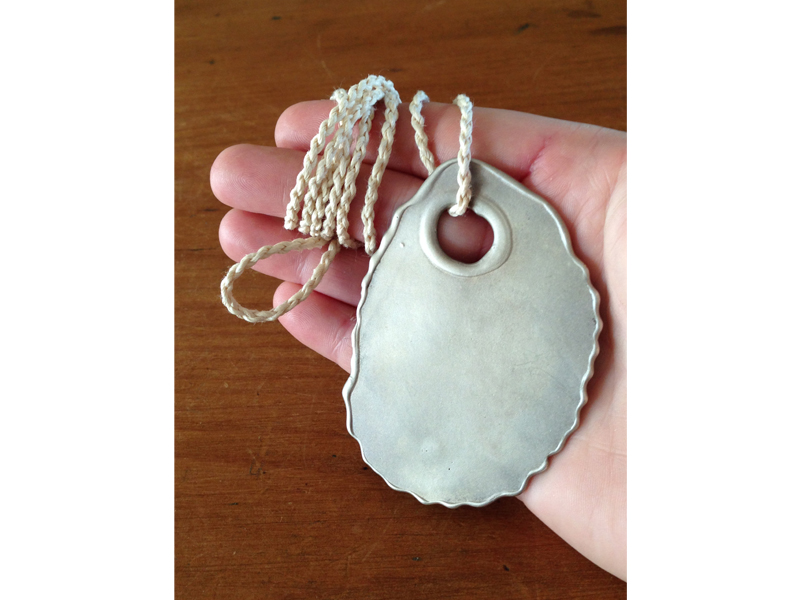
Areta Wilkinson: Kaupapa Māori praxis considers research as a site of transformation and empowerment, and I am interested to know what drives your research practice: Who are the communities you serve? Who is the research for? How do they benefit from your knowledge production? Who owns the knowledge?
Benjamin Lignel: I find that my different activities—editor, curator, maker—have a remarkably similar ambition to your own (I am thinking in particular of your answer “My jewelry practice is a process, a ‘making’ sense of the world around me.”) My work as an editor, for example, caters to the varied readership that AJF has, and aims to provide readers with the instruments that will help them make sense of current practice. The end goal would be to inspire and sharpen their minds. In this respect, Art Jewelry Forum can be described as “educational,” but it is not a classroom: It very much relies on the readers themselves coming to get what they want, and building their own knowledge out of the many building blocks we provide.
The methods that inform my thinking habits are different from yours, though. Exaggerating the contrast between your “relational” worldview and my own, I would refer to an early influence of mine, namely the Brechtian idea of “alienation effect.” His plays—and his staging—worked to erode the traditional “suspension of disbelief” expected of theater-goers, and forced audiences to accept the artificiality of what was being shown to them, and reflect on the constructs at work in the theater itself. More recently, I was excited to re-read Anthony Dunne’s Hertzian Tales (1998), a compendium of case studies and design proposals that analyzes the shortcomings of 90s electronic products, and suggests strategies to derail the implicit agenda they carry. He advocates for “post-optimal objects,” characterized by “user-unfriendliness”—a mix of criticism and optimism—to oppose the opacity of “black-box” design. Another example would be the notion of “disobedient object,” which was used as a title for a show at the V&A. It encompasses a wide range of subversive, DIY solutions for political resistance. All these various (and quite unrelated) examples have to do with creating awareness through a form of disruption. I think this marks me as a child of the literary 70s: not quite over the edge of post-modernism, still clinging to the idea that dissent can affect intellectual change.
Nigel Borell: What drives my interest in research is the idea of searching for answers/explanations to the various ways we can better understand our Māori cultural heritage and how this can contribute in shaping our cultural future. Implicit in this, for many indigenous cultures, is the reinstating and realigning of knowledge to include our ways of seeing and knowing. This is the knowledge research, a knowledge pursuit that excites and motivates me. And indeed it is what I find fascinating about your present work! My curatorial and writing work is speaking firstly to a Māori audience and to my own interests within that—this is the conversation I am seeking. Secondly, there are a range of other interests/groups/considerations/audiences that are non-Māori, however they are all secondary for me. I think it is important to make one’s research accessible to Māori. This can range from simple things such as the language we use and the framing of concepts—how knowledge is presented and framed—to the sites within which we choose to share that knowledge. So thinking through how Māori can access this information is a critical consideration. I am the author of the work but it is collectively owned. I also reserve the right, as Māori, to shape it as I wish. However, Māori collective knowledge and concepts are a profound expression of our heritage that has endured over time. The ideas expressed in the interview here, such as pepeha, mauri, manaakitanga, wairua, are all enduring Māori practices and values that resonate as much today as they did 1,000 years ago for our early forebears. The fact that Māori still celebrate such a strong connection to these practices seems to contradict the delineal “past and present”: a dichotomy as opposed to understanding or seeing continuity and enduring practice.
Areta Wilkinson: You both collaborated recently on a taonga/tiki workshop at Auckland Museum (2014). What did this entail? What did you both discover/learn through the taonga workshop or from tiki at Auckland Museum?
Benjamin Lignel: The project was hatched during the early days of my first visit to New Zealand, in 2014. Philip Clarke, the director of Objectspace, was my host, and was doing his best to answer my curly questions about tikis—in particular the tension between customary craft and contemporary craft in New Zealand. Could I, a non-Māori maker, subvert the tiki form, and “do something to it”? Could I assume that my status as an artist would prevail against assertion that I was being disrepectful to the Māori culture if, say, I mixed it with foreign cultural markers? Philip Clarke is a patient and extremely knowledgeable conversationalist. He managed to unstick me from my European thinking habits, and brought me a couple of inches closer to understanding the special care and respect that surrounds Māori culture.
Still, I found that there was nothing obvious about shielding cultural artefacts from the dangers of reinterpretation, and I suggested that we include a case study on tikis as part of a curatorial workshop I was running at the Auckland Museum. Nigel very kindly agreed to present the museum’s collection of tikis (which included both contemporary works and taonga) to the participants, who were in turn asked to come up with innovative curatorial proposals. These proposals had to engage with the fact that customary artefacts and artistic objects do not necessarily exist on the same plane, or imply the same curatorial setup. Their cultural agency is premised on different points of reference, which means, quite literally, that customary work and contemporary work are usually not shown side by side, or use the same museographic standards. This brings up all sort of interesting questions: the museological distinction between singular and generic objects, how this dovetails (or not) with questions of authorship and cultural ownership, the role of museums as machines for producing identity, etc.
The brief was really open. There were no budget constraints, or export restrictions. The curators could “rehang” the tikis in institutions of their choice, in NZ or abroad. All three groups chose to keep it in NZ, and to celebrate local communities, in some cases by traveling these treasures around the two islands. None of the groups were interested in challenging the tiki—either by bringing them in contact with charged objects from other contexts or cultures, or by opening the door to remixes, appropriations, reinterpretations (these expectations are very much a product of my own cultural make-up and limits.) Instead, the respect with which participants engaged with the tikis—and the natural tendency to favor “relations and accountability” over “disruptions and doubt”—bore testimony to NZ’s complex bicultural landscape, and to New Zealanders’ powerful investment in the question of cultural appropriatedness. It also showed me how comparatively unwilling the French have been to deal with sticky questions of cultural colonialism in the past, and how differently they deal with it now.
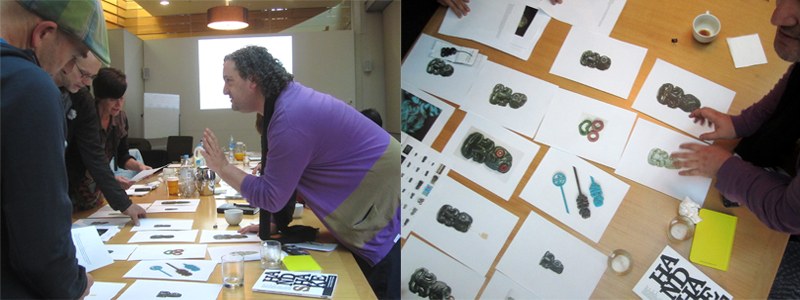
Nigel Borell: As Ben describes, we met when he visited in 2014 and came to the Auckland Museum interested in seeing the hei tiki collection and to know more about this item that he had seen throughout his travels as a visiting curator in Aotearoa New Zealand. We had a tentative conversation about the hei tiki and their significance—tentative because as a Māori curator I am often having baseline conversations about Māori ideas and concepts that are rather loaded, and this requires me to carefully think through how to translate the significance of such items to others that might (often) have a limited cultural frame of reference. Having said this, not knowing can also bring about some great conversations in itself. Also crucial in this “getting to know you” time is how one another bounce off ideas openly and collaboratively. Ben and I had a relaxed, open rapport that helped build a mutual trust to experiment and investigate this discourse. Ben cleverly seized this opportunity to collaborate as part of the curatorial master class workshop. Here we assembled a range of taonga hei tiki with contemporary pieces and asked participants to arrange an exhibition display based on the limited information (if any) that was offered. I also mixed into the list works that did not actually reside in the museum collection so it was also an opportunity for me to do a side experiment to see how participants navigated the customary and the contemporary and the values (as they know them to be) of displaying taonga Māori in museum settings. The level of consideration and anxiety that slowly set in was interesting as it was through a desire to respectfully display the hei tiki collection that some fascinating conversations and considerations were proposed by the various participant groups. So I was privatively making my own observation and evaluation of how the participants and Ben navigated this proposition. I think it assured me that (in general) people are very conscientious about how taonga Māori are presented and what best practice might mean in relation to Māori aspirations in a bicultural way.
Nigel Borell: Where to from here?
Your practice and the statements you are tackling are rather large and propose intriguing implications (for all the right reasons). Where is this all going? What is it building toward?
Areta Wilkinson: The short answer is “I don’t know and we shall see.”
My jewelry practice is a process, a “making sense” of the world around me. I am enjoying the journey at the workbench, the learning and the relationships and how these impact on my work. My aspiration is to open up the conversation more—especially here in Aotearoa New Zealand.
